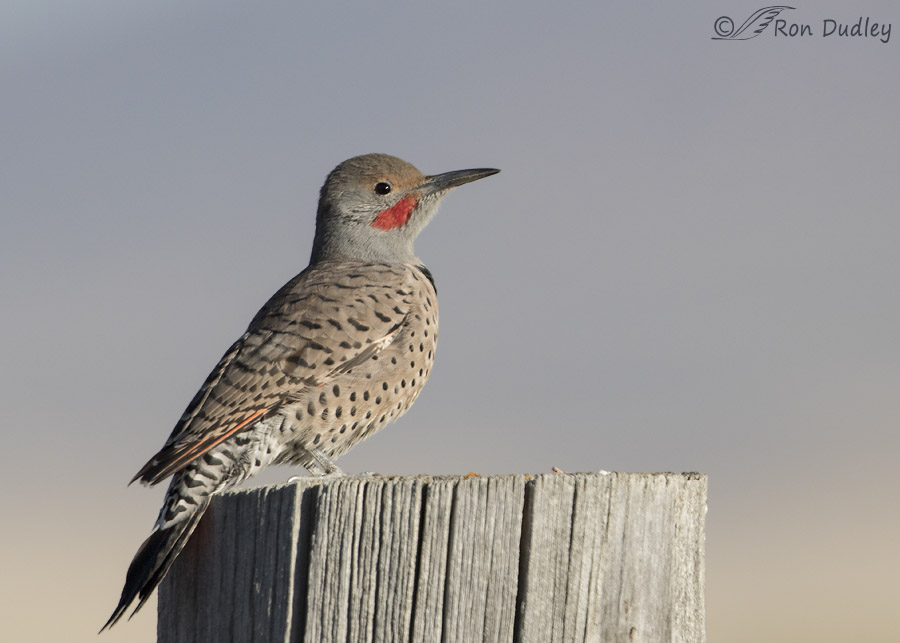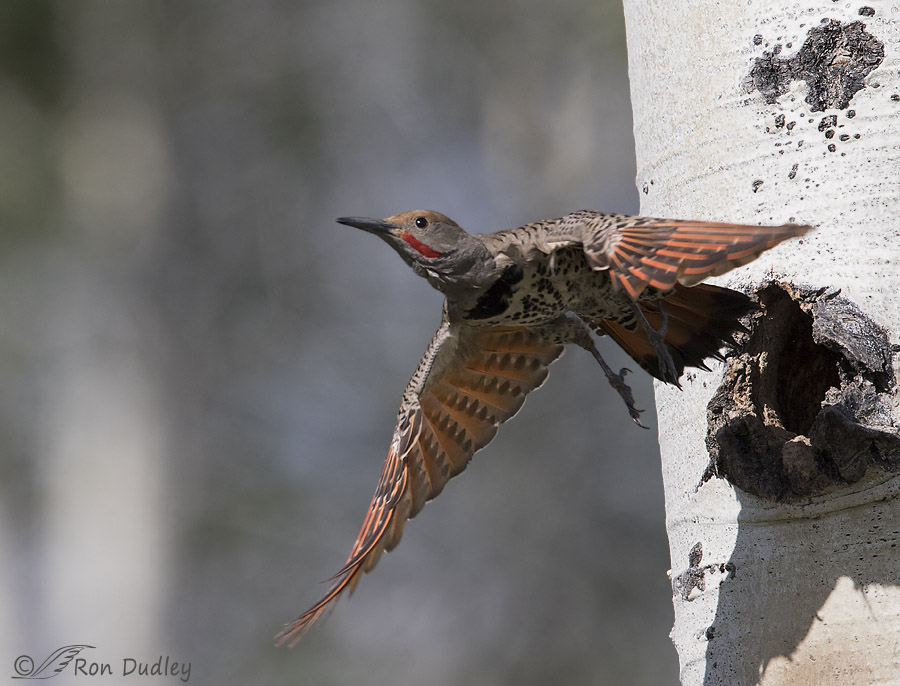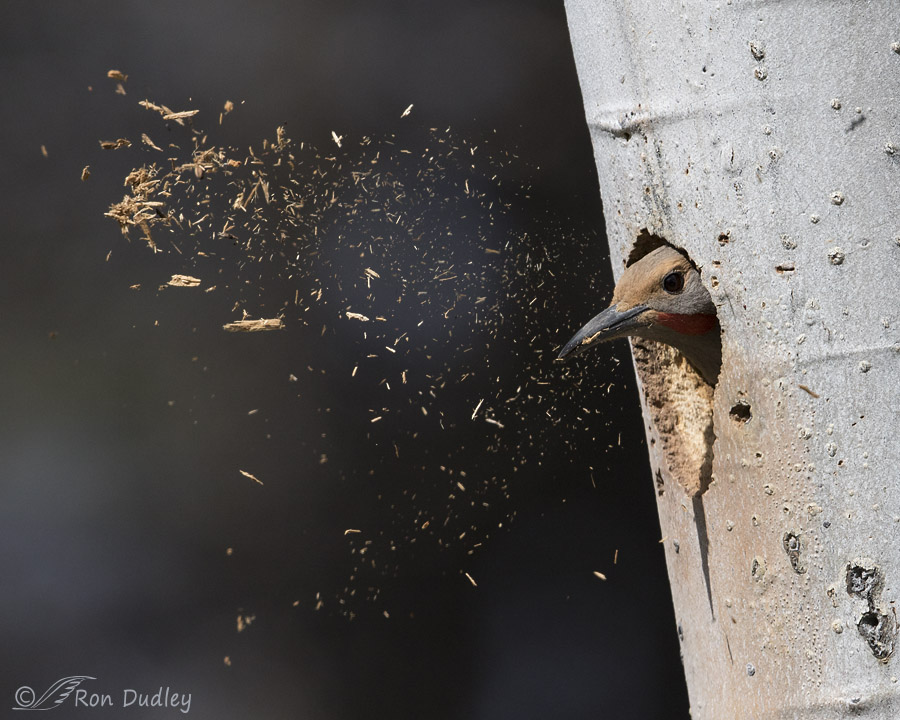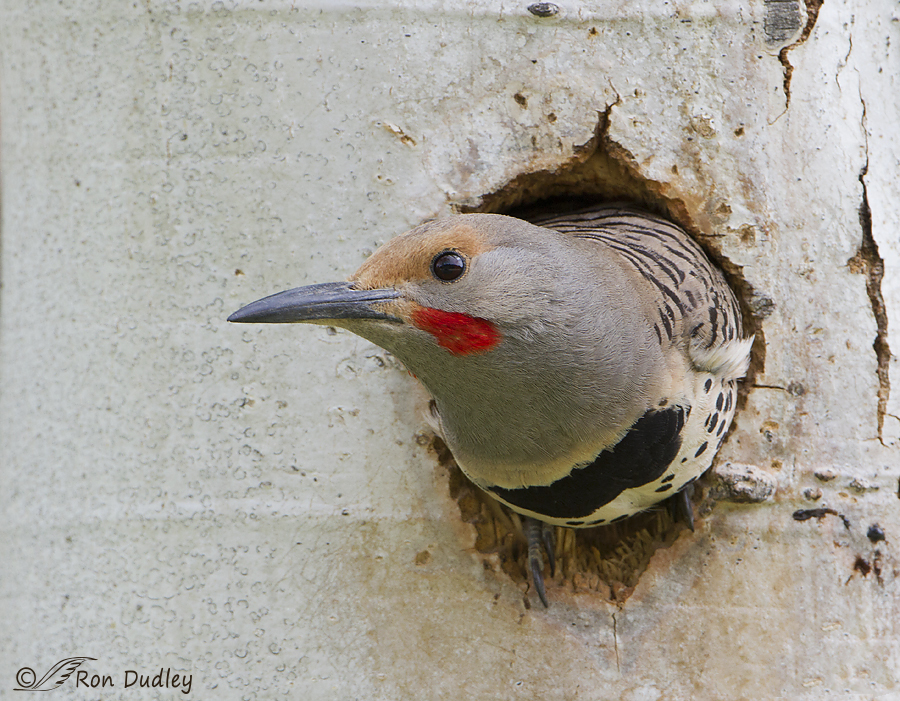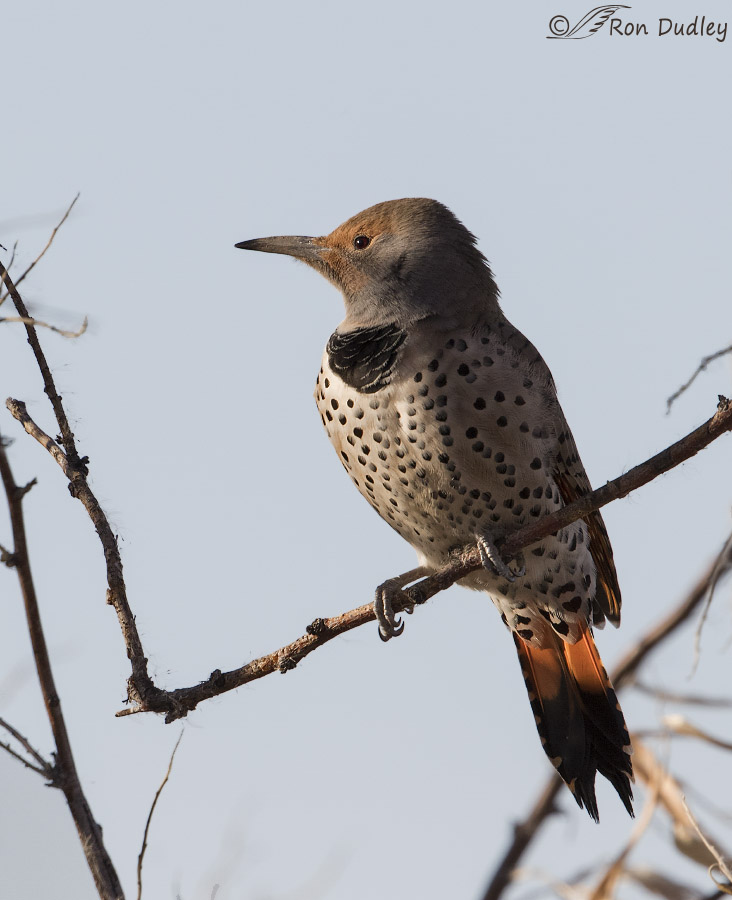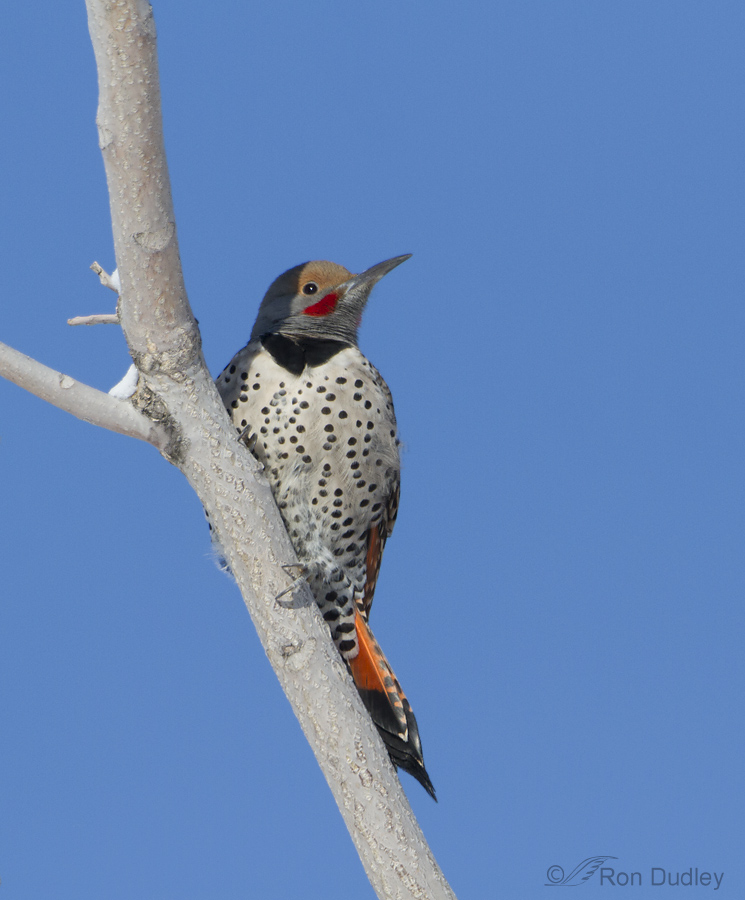Tag: northern flicker
A Nesting Cavity Tree Tragedy And An Image To Ease My Disappointment
Northern Flicker Excavating The Nest Cavity
A Collaborative Effort To Protect Nesting Birds
Sidelit Northern Flicker (red-shafted)
A Two Woodpecker Day And The Temptations Of The Clone Tool
A Northern Flicker And The Kindness Of A Stranger
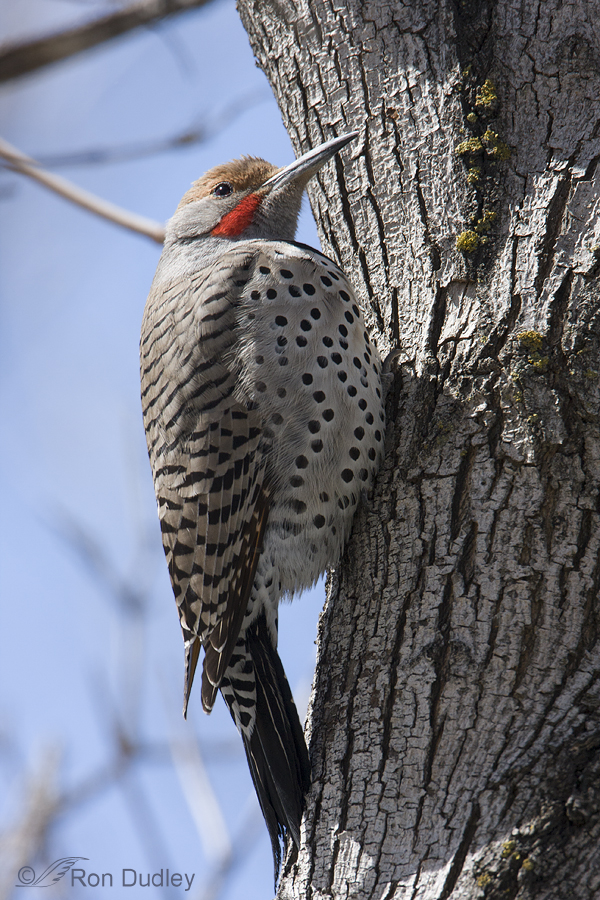
In early 2008 I was a frustrated novice photographer. I had recently invested heavily in an expensive “bird lens” and switched over from shooting in JPEG to RAW all in an effort to get high quality shots but it just wasn’t happening. My images were not as sharp as they should be and I couldn’t figure out why.
Northern Flicker Surprise
A while later I glanced down at one of the holes again and noticed that it seemed to have disappeared or changed shape and color. Closer inspection revealed the reason for the change – the hole was now filled by a gorgeous Northern Flicker looking back at us with one big eye.
It’s Been A Tough Winter For Birds (and it’s getting worse)
Typical winters are hard on birds in northern Utah (and elsewhere). But when the season is unusually frigid with lots of snow as we’re having this year they struggle even more to survive. All of these images have been taken since January 2 of this year. Upland game birds like this Chukar seem to have adapted to extreme conditions fairly well. This bird was all puffed up and sitting high on a rock to catch the earliest warming rays of the sun as it rose over the nearby Wasatch Mountains. Another upland game species that can apparently take harsh conditions quite well is the Ring-necked Pheasant (this is a female). They seem to forage for seeds at the base of plants where the snow isn’t as thick and their food is more readily available. But many other species have a difficult time and quite a few birds don’t survive until spring. The waterfowl that winter over here congregate in the few areas of open water where the flowing water is the last to freeze over. But when it gets very cold, even those small bits of open water freeze. I’ve seen ducks and coots frozen into the ice, some of them still alive. This female Green-winged Teal has just left one of the last unfrozen patches of water and is approaching an area of frost flowers. This Northern Flicker is using the protection of the underside of the eaves of a building on Antelope Island State Park. I thought the angled…


